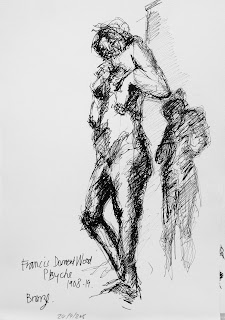Peterborough
Here my
narrative does not open with another Romanesque acclamation. The west front of
the Cathedral Church of St Peter, St Paul and St Andrew has a triple Gothic entrance
that is unique. The portico was built around 1380. There is additional lovely Perpendicular inside,
especially at the very eastern end of the church.
Romanesque
is here because the Normans got to work in 1118 and by 1140 had most of it sorted.
Much is still here for us to enjoy except the tower, replaced by a Decorated
confection when its Norman forerunner became unsteady.
Extract from my new book, English Cathedrals. Capturing the wonder of these very special places in 60 exciting drawings. Order via
http://bit.ly/2tbCoE

















